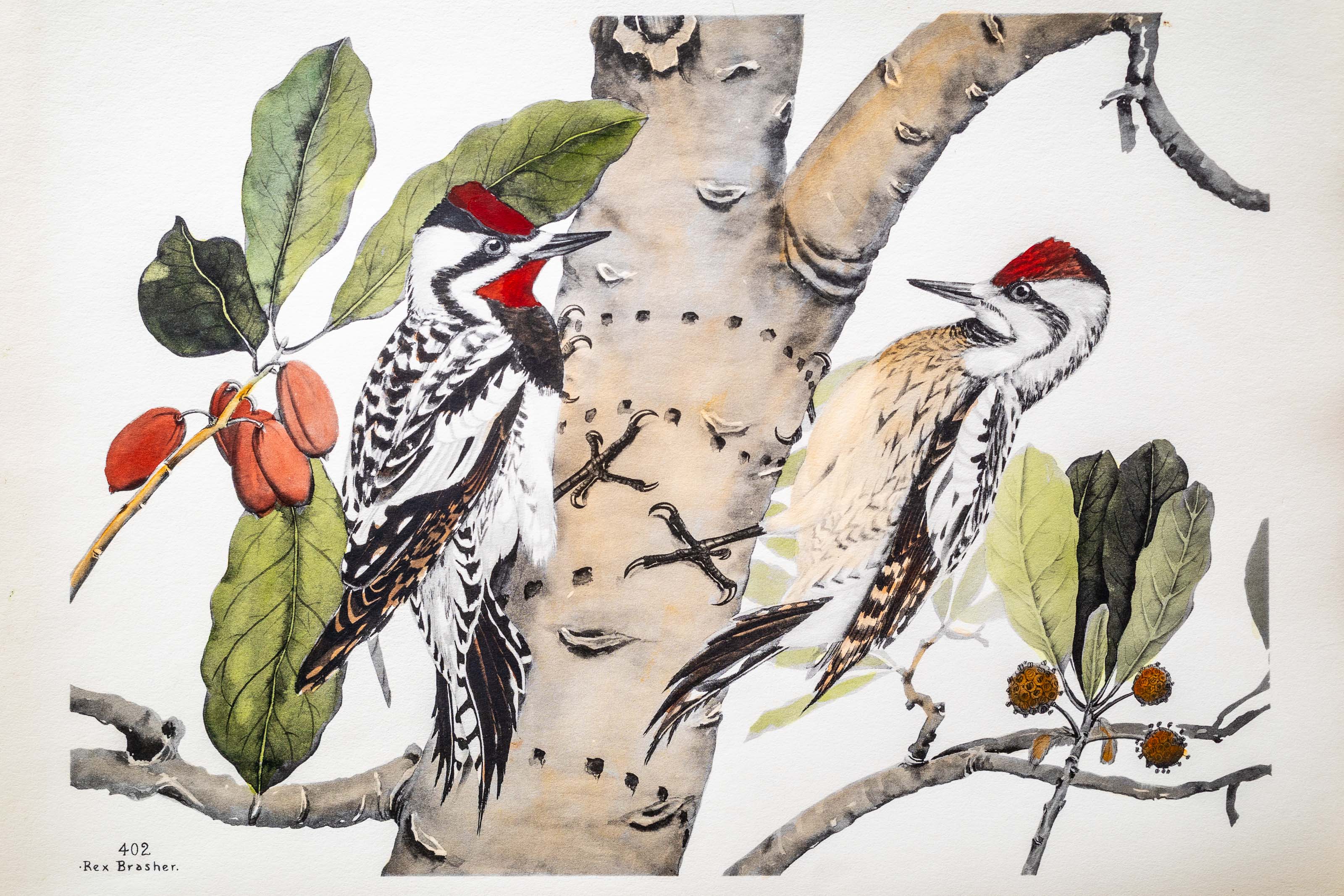
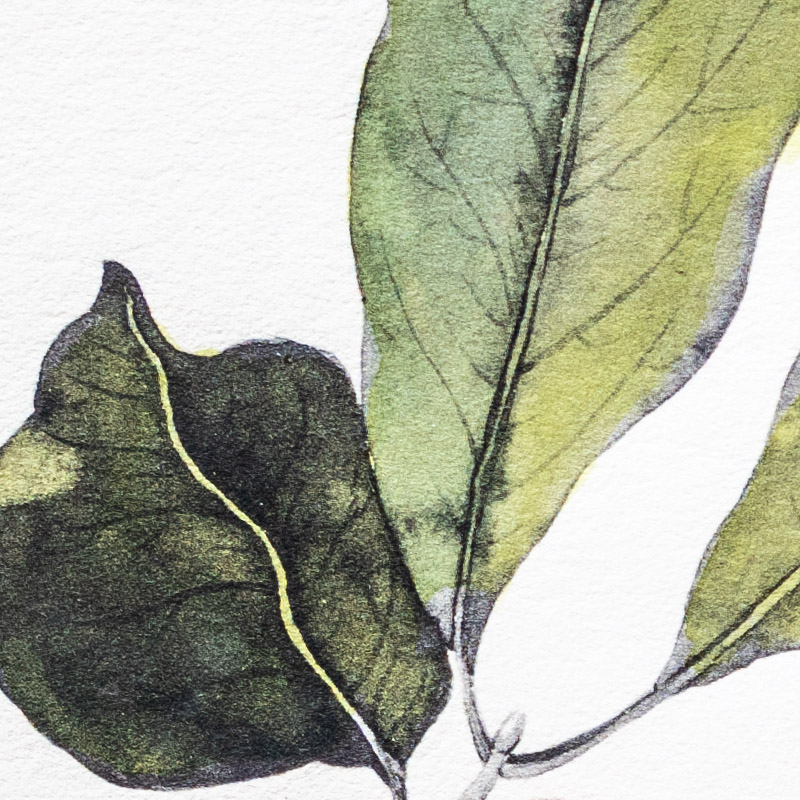
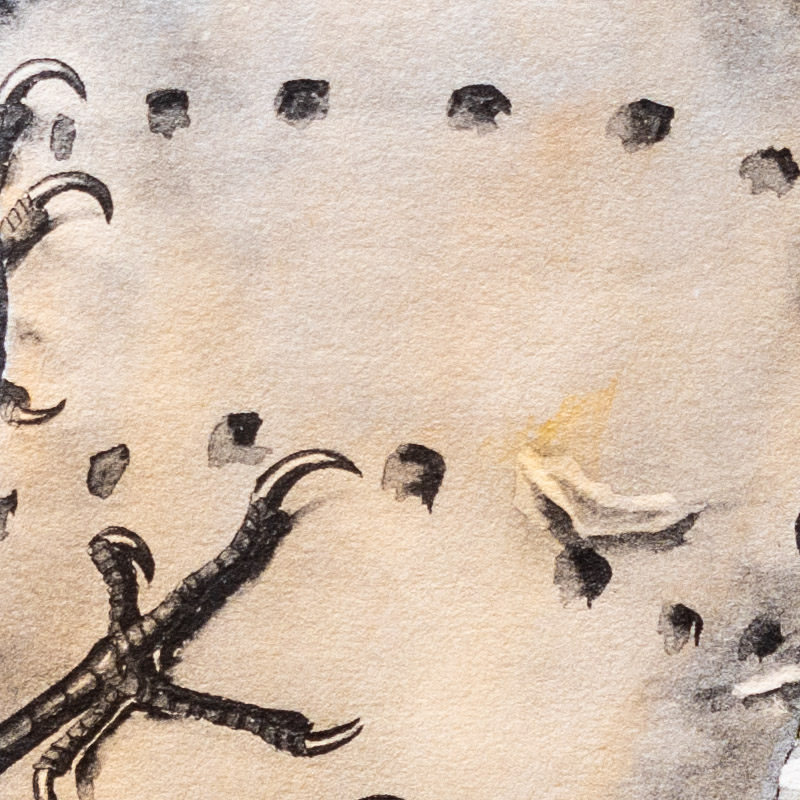
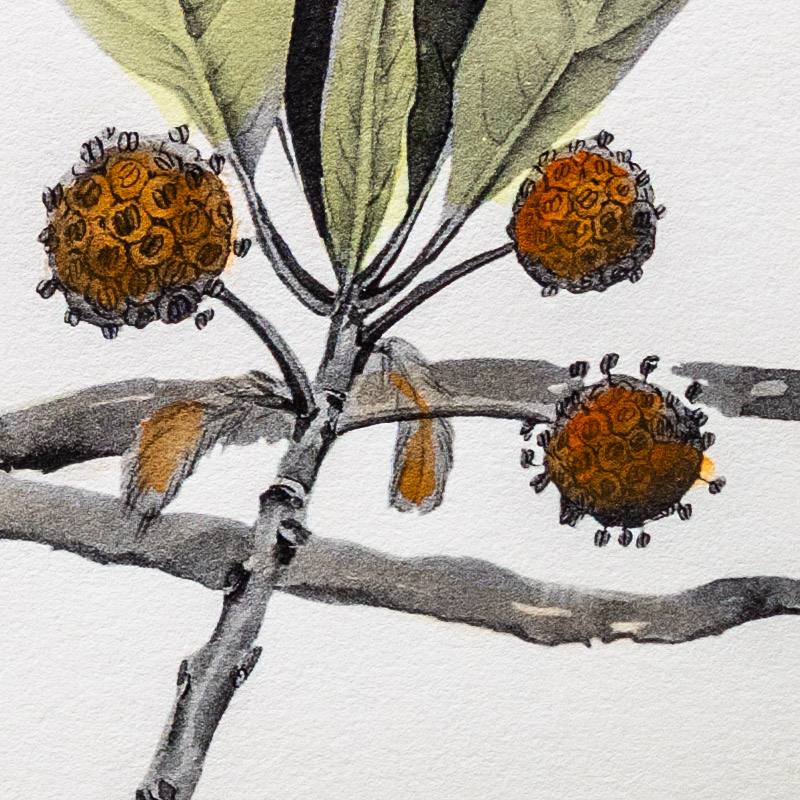

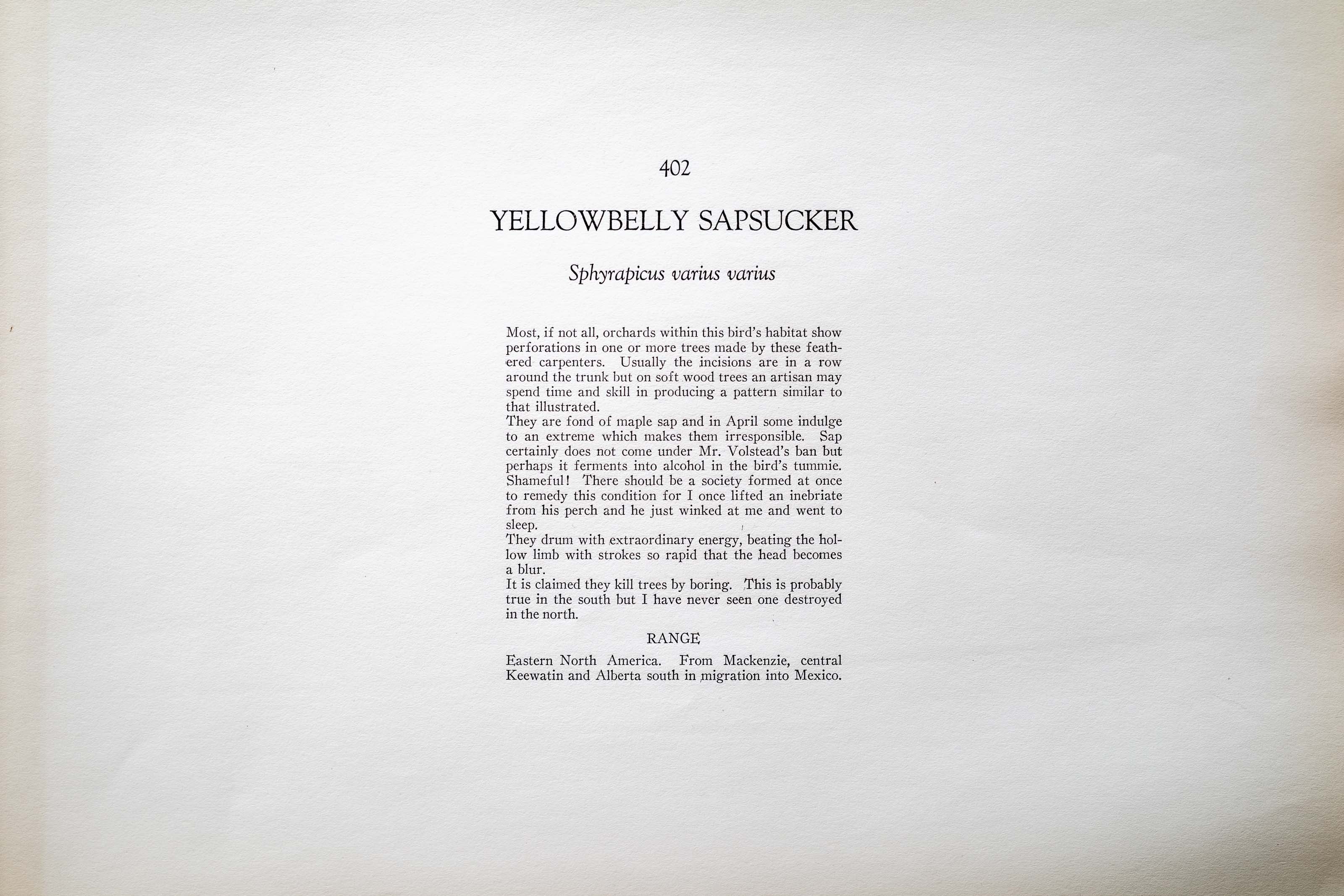

Unknown
1931
6
402
A team of dedicated board members, volunteers, and student interns has published every page in Volume 9. This volume includes 360 images of paintings and lyrical descriptions of birds, now available online for everyone to enjoy anywhere in the world. This is a monumental task. Each volume requires approximately 400 hours to photograph, edit, transcribe, catalog, and publish online. We need your support to complete this work.
If you're tech-savvy, have a good eye, are meticulous with details, and love structured data, please consider volunteering by emailing us at hello@rexbrasher.org.
We encourage all bird lovers and supporters to consider a monetary donation to support our mission to make Rex's work available for everyone. You can provide a one-time or recurring donation online.
Most, if not all, orchards within this bird's habitat show perforations in one or more trees made by these feathered carpenters. Usually the incisions are in a row around the trunk but on soft wood trees an artisan may spend time and skill in producing a pattern similar to that illustrated.
They are fond of maple sap and in April some indulge to an extreme which makes them irresponsible. Sap certainly does not come under Mr. Volstead's ban but perhaps it ferments into alcohol in the bird's tummie. Shameful! There should be a society formed at once to remedy this condition for I once lifted an inebriate from his perch and he just winked at me and went to sleep.
They drum with extraordinary energy, beating the hollow limb with strokes so rapid that the head becomes a blur.
It is claimed they kill trees by boring. This is probably true in the south but I have never seen one destroyed in the north.
Eastern North America. From Mackenzie, central Keewatin and Alberta south in migration into Mexico.
A tree rarely 70 feet high. Found in Georgia, South Carolina, northern and western Florida.